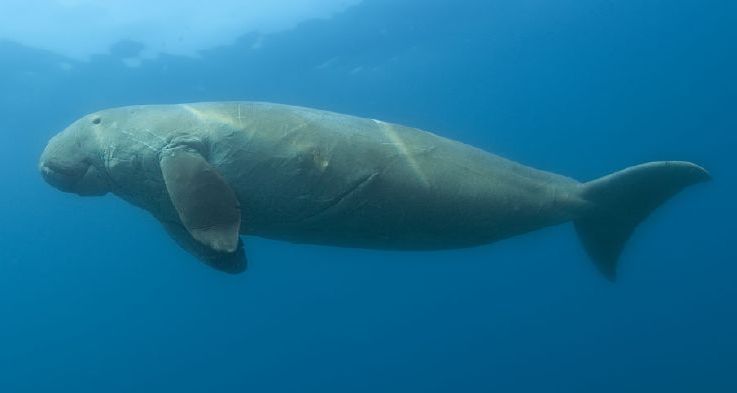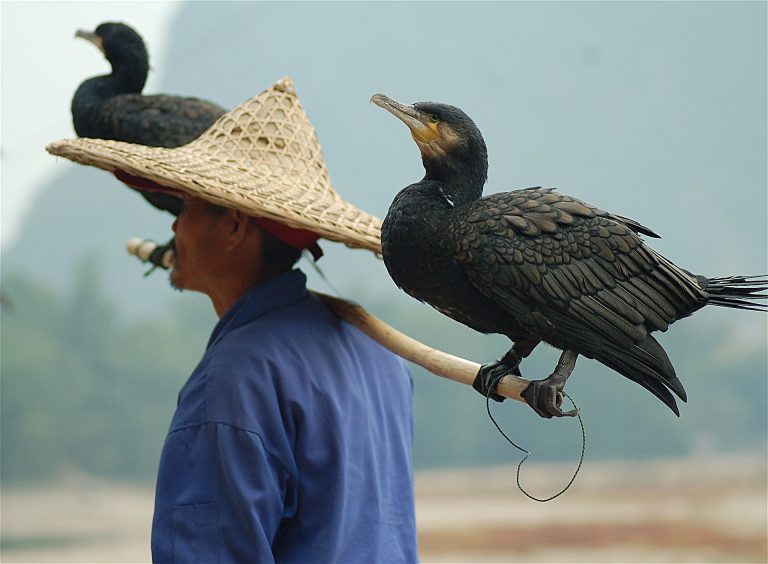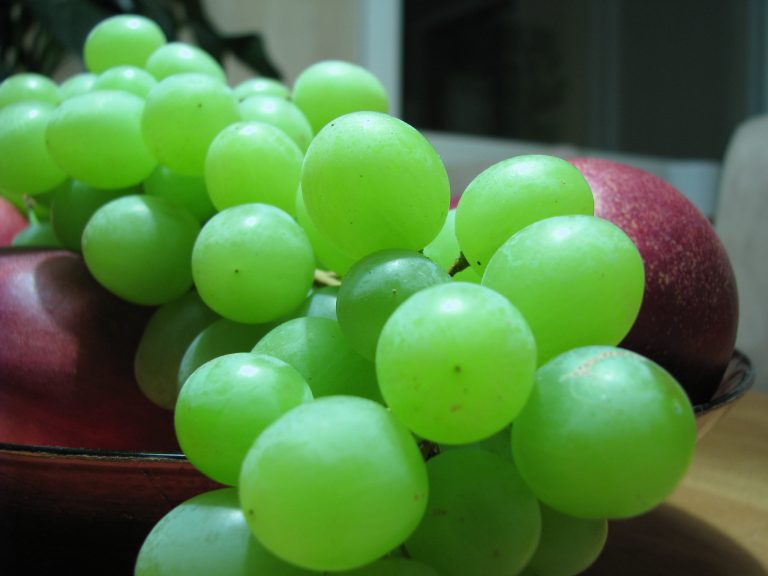With an unusual name to match their unusual appearance, dugongs are the sea cows of the south. Like their cousin the manatee, these hefty sea mammals have been mistaken for large mermaids in the past. They have a rich history in folklore and are protected by law in many countries. Although they have few natural predators and are rarely hunted by man, the dugong is threatened by loss of habitat.
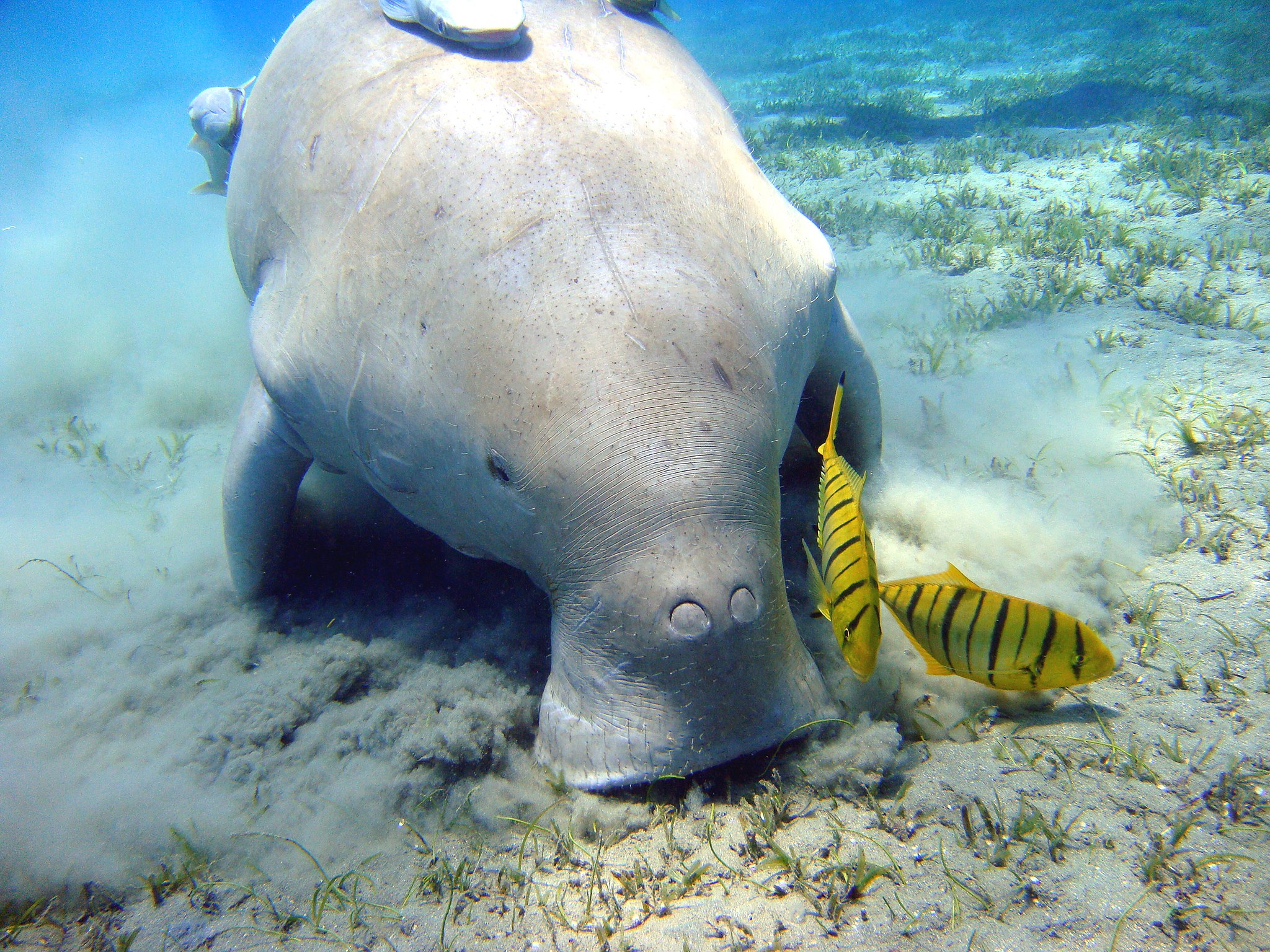
The life of a dugong
Dugongs can grow to be around 10 feet long, and weigh between 500 and 1,000 pounds. They rely on sound and touch to navigate through the water, as their eyesight is poor. Unlike the paddle-shaped tail of manatees, these slow swimmers have a fluked tail, much like whales and dolphins.
Although their brains make up only 0.1 percent of their body weight, dugongs have a good memory like their fellow eutherian – the elephant. They can remember the location of feeding grounds from one season to the next in their semi-nomadic lifestyle.
The dugong is at home in the seas close to the Indian and Pacific oceans, preferring the warm coastal waters where their primary source of food — seagrass — is commonly found. Grazing with the bristles on their upper lip, dugongs consume over 60 lbs of sea grass each day. Obviously, destruction of their grazing grounds would have a serious impact on dugong populations.
With their massive size and leathery skin, dugongs are rarely preyed upon; although killer whales, sharks and crocodiles have been known to catch them. Water pollution and other disruptions to the ecosystem are their main threat, as these inhibit the growth of seagrass.
Success
You are now signed up for our newsletter
Success
Check your email to complete sign up
Other man-made threats include fishing nets and illegal hunting. The sale of dugong flesh is prohibited, yet lucrative, as some body parts are believed to have medicinal value, and the meat of one dugong could feed hundreds of people.
Dugong folklore
In many countries along the coasts of Africa and Southeast Asia, the dugong enjoys some protection through its prominent position in folklore. An essay written for the Dugong and Seagrass Conservation Project relates, from a Dugong’s perspective, how the animals are regarded in different countries.
Madagascar
There was once a strong ethnic clan called Marofelana, who wanted to expand their kingdom by conquering their neighbors. The queen of a conquered tribe did not wish to be enslaved or killed, so she dove into the sea with her servants.
After a few days they had all transformed into dugongs. When they were seen again, they looked like “humans with tails and heads like pigs.”
This story may explain why they are commonly called “sea pigs” in Madagascar, although the same nickname in Mozambique, according to a fisherman, comes from their being “fat and slow.”
In Ironona, Madagascar, it is said that harming a dugong has karmic retribution. Do not cut a dugong’s ears, or you will become deaf. Do not cut its fins, or you will lose mobility in your hands. If you eat, or kill a dugong, you may forever be cursed.
Malaysia
Although the word “dugong” is taken directly from Tagalog, an Austronesian language still spoken by the ethnic Tagalog in the Philippines, it also resembles the Malay word “duyung,” meaning “lady of the sea.”
In the Malaysian island of Pulau Sibu, people harvest fruits that grow within seagrass during the monsoon season (November to January).
According to legend, there was a pregnant woman in the island of Pulau Tinggi who loved eating the plant. After being rejected by her husband, she went to sea during low tide and ate seagrass until the tide rose — and turned her into a dugong.
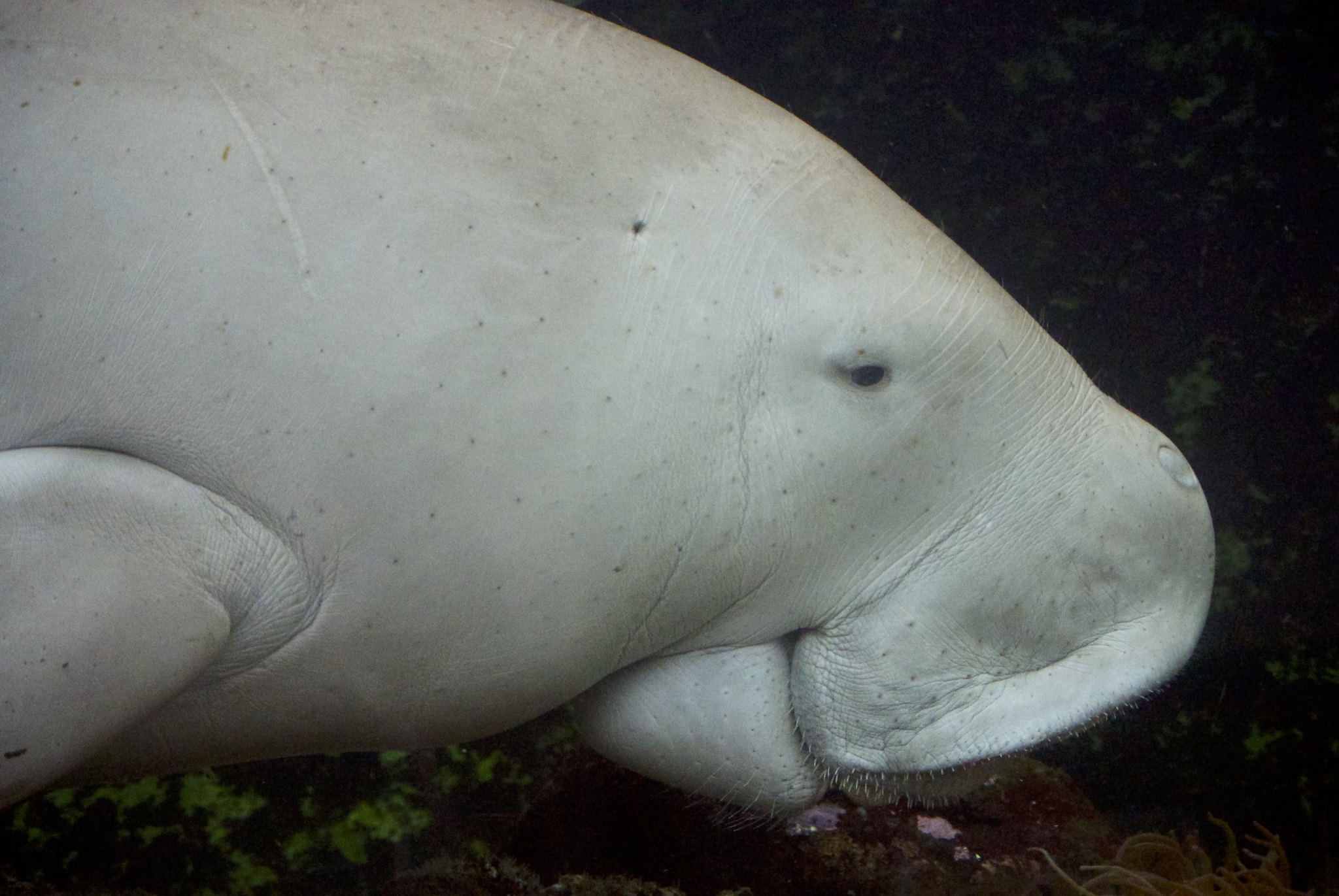
READ MORE:
- ‘Clever Kanchil’: The Mouse Deer that Captivated Malaysia and Indonesia
- Indian Folktales With Moral Lessons – Part II: Character Matters More Than Reputation
- Zimbabwe Sojourn: A Journey Through the Dark Continent
Ia Tekwa and the Legend of Lau
One of the more prominent dugong legends comes from the Solomon Islands, where the Bailangi and Buni tribes consider it taboo to harm the animal.
Once upon a time, there was a boy whose parents were looking for a girl to marry him, but they failed to find a suitable bride after visiting several tribes. Refusing to give up, they went to the mainland of Bailangi, where, finally, they found a girl who was willing to marry their boy.
As a wife and mother, the girl worked very hard and cheerfully to complete the tasks given by her mother-in-law. She was well-liked for her industrious nature, but the mother-in-law finally grew jealous and plotted to make her life miserable.
Once, she placed a heavy red stone in the girl’s bag and watched her struggle to drag the bag that was now too difficult to carry. When the girl discovered the deceitful trick, she fell into despair and walked toward the sea to end her sorrow.
Her husband wept for her to forgive his mother, begging her to take care of their baby; but her heart was broken. She started to draw in the sand several sea animals as options for a new life, but rejected many of them because they were food to her people. As she continued to draw, she finally found the right one.
It was an animal that resembled a human, yet was strong enough to destroy fishing nets: the dugong, or “ia tekwa” in the Lau language.
So the young wife jumped into the sea and became a dugong, leaving her husband, their child and the jealous mother-in-law behind. That was how it became taboo to eat dugong.

The last dugongs of Japan
The dugong is also an important cultural symbol to the Okinawan people, whose ancestors regarded the animal as a messenger of the sea gods. It is also believed to bring warnings about incoming tsunamis.
“We have lots of legends and folklore regarding dugongs — one story I really like is that dugongs taught human beings how to mate,” Hideki Yoshikawa, co-director of the Citizens’ Network for Biodiversity in Okinawa, said.
Because of damage to the surrounding coral reefs, the construction of a U.S. military base on the coast of Okinawa has met with opposition for almost 20 years. Loss of this habitat could plunge the last dugongs of Japan into extinction.
“These dugongs are known as the world’s northernmost population of the species, and it is estimated that there are as few as a dozen left,” Greenpeace Japan’s Yuki Sekimoto told Global Ideas, DW reported.
“The concrete slabs which were being dumped into the bay have destroyed coral reefs even outside the construction zone, and the seabed in the area houses seagrass which is the main food source of the dugongs.”
While the Dugong and Seagrass Conservation Project has a comprehensive program to save the dugong and their habitat, understanding their cultural value can provide further incentive to protect these fascinating and harmless creatures. Education and spreading awareness can help us all be more conscientious about our actions.



